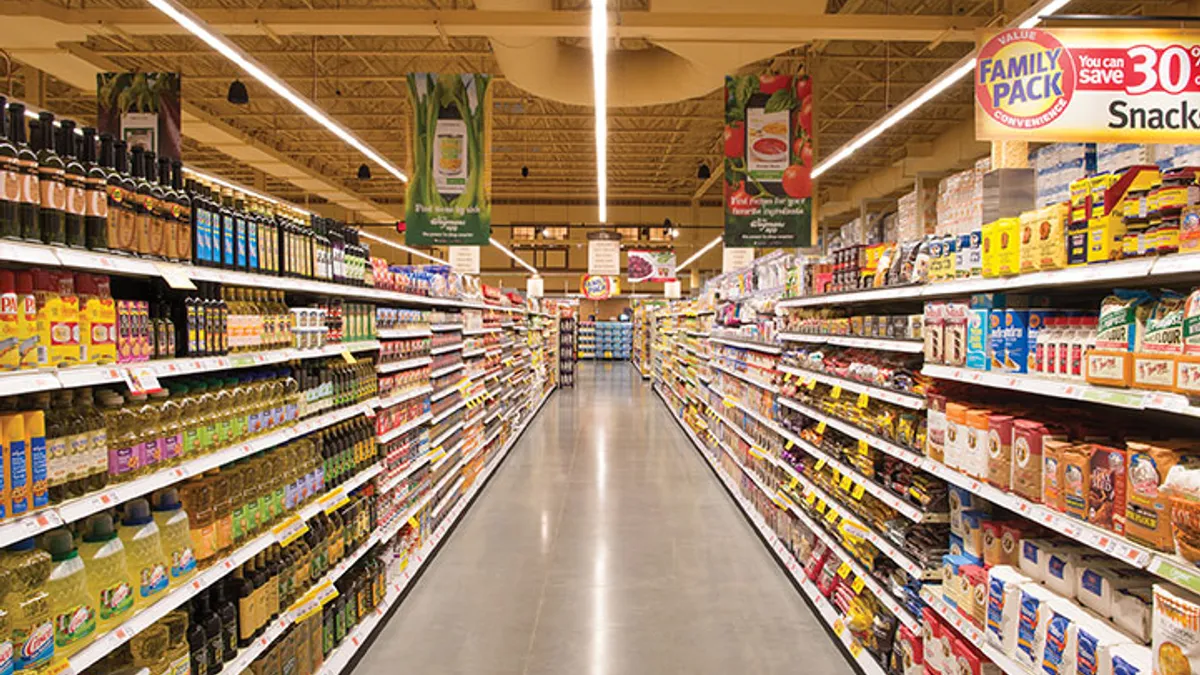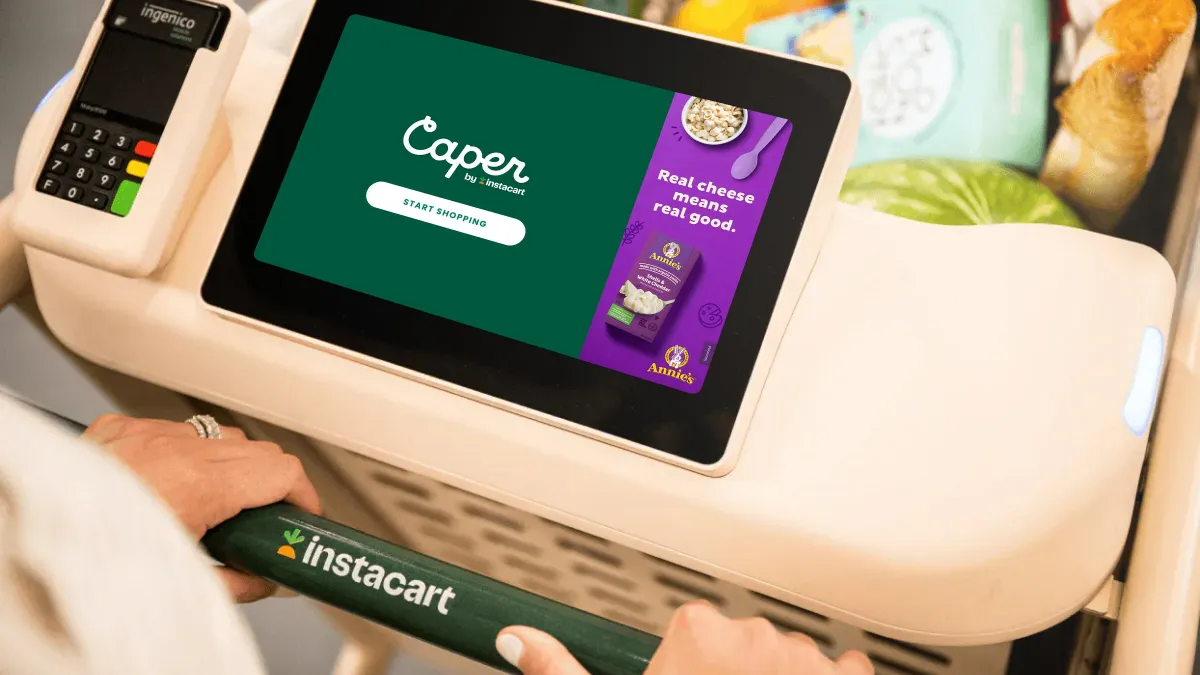It’s a settled point by now that physical grocery stores matter and will continue to matter even as online shopping continues to evolve. The question then becomes how, exactly, do retailers keep these stores relevant amid the growing threat from alternative formats, restaurants and e-commerce players?
Traditional grocers aren’t doing so well on this front. According to McKinsey & Company, from 2012 to 2017 more than half of grocers' profits in North America and Western Europe evaporated. Globally, they could see anywhere from $200 billion to $700 billion in spending fall to discount, online and non-grocery channels over the next seven years.
Retailers will say that they're relentlessly focused on the customer, and most are making significant investments in their stores and digital assets. But it’s still become a foregone conclusion that the supermarket is in serious decline.
So what’s missing? Are so many national, regional and independent operators in the industry doomed to slide into irrelevance?
An article in The Atlantic caught my eye recently. It chronicles the rise of design thinking — also known as user experience design or human-centered design — in corporate America. Design thinking asks companies to carefully examine the fundamentals of their model by focusing not just on what customers want, but how they want to use a product and how that product (in this case, grocery stores) fits into consumers’ lives. It’s the sort of thinking that produced the iPhone, the now ubiquitous tool that dared to do away with all those numbered buttons.
The story profiles Jim Hackett, who took over last year as the CEO of Ford Motor Company. Hackett convinced the company’s board of directors that it needed to approach its cars from how they fit into consumers' lives — not the other way around. This inspired engineers to produce, among other innovations, swiveling seats that allow passengers to more easily converse, and an interface centered on peoples’ phones and the apps they use.
Faced with fierce competition and a changing customer, Ford had gotten caught up in a relentless cycle of innovation that had caused the company to overlook simple but very important questions. Hackett calls this the “design gap.” The Atlantic reported, "The flood of new technologies makes everything possible. Without a clear compass, the tendency is to add features willy-nilly."
This should sound familiar to grocers, who have furiously added new products and services in an attempt to navigate unprecedented industry disruption. Bigger produce displays, grab-and-go foods, sushi counters, sampling stations, vegetable butchers, popcorn stands, pizza ovens and local foods are all part of this equation. On-tap kombucha has, oddly enough, become a must-have for any retailer that's remodeling stores these days.
Some of these updates are vital and tend to move the dial on sales to some degree, which convinces companies of their necessity. But ironically, all this sameness in innovation isn’t differentiating one grocer from another these days. And it’s not addressing the fundamental problems with the grocery store model.
Consider meal prep and meal inspiration. Grocers have added all sorts of ready-to-eat and ready-to-heat options to their stores, which have lifted sales and thus convinced many retailers they’re improving as meal destinations. But for the many consumers that like to cook at home and want to discover culinary solutions, they’re confronted with aisle after aisle of ingredients laid out in the same confusing, nonintuitive fashion they have been for decades.
Problems extend beyond the store. Steve Dennis, a retail consultant, author and former chief strategy officer at Neiman Marcus, told me grocers’ websites are similarly uninspiring, and that their e-commerce interfaces have a sameness that makes one no more memorable than another. Grocers, he said, have gotten so caught up in the online shopping arms race that they’re overlooking ways to use their apps and websites to drive customers to their stores.
“I don’t think grocers should get so hung up on e-commerce,” Dennis said. “They should think about how to leverage digital channels to maximize the performance of their stores.”
Taking a design thinking approach leads to some very provocative but necessary questions grocers should be asking themselves. Does a store need aisles? Should products be organized by category? Are employees focused on the right tasks? Is store technology improving the customer experience or merely complicating it?
I’m not suggesting all grocers rip down their aisles, redesign their apps and kick all those adorable aisle-scanning robots out of their stores. And I should note that grocers, by selling more fresh, local foods and flavorful meals, have been taking a long, hard look at their traditional business model. But more clearly needs to be done, and retailers aren’t going to improve by following a familiar game plan, or even their latest game plan, into the future.
So how can grocers improve? I suspect anyone reading this by now is thinking, understandably, about cost. But before they focus on the price tag, retailers should first focus on process. As Dennis pointed out, companies have long used the same measurement tools to gauge shopper demand, including customer data, surveys and net promoter scores. These are helpful, he said, but tend to focus on past behaviors and existing customers.
“My advice is always to engage in some sort of rethink of the customer journey,” he said. “You have to get into how you make the customer feel. It’s an emotional thing.”
To discover how customers felt about its cars and about the act of driving, Ford hired sociologists and anthropologists. It didn’t just ask people how they felt about driving — it carefully observed them as they drove, noting subtle cues that indicated concerns and desires they may not have otherwise been able to articulate.
"You have to get into how you make the customer feel. It's an emotional thing."

Steve Dennis
President and founder, Sageberry Consulting
Some grocers are already doing this. Lowes Foods, a chain known for its enjoyable store experience, observes customers not just in stores but in their homes, as well. This layer of qualitative data, or as CEO Tim Lowe calls it “small data,” yields unexpected insights when married to the quantitative data chains are so adept at mining.
“Our job as a business is to go out and find those unmet needs,” Lowe said during an industry presentation last year. “That’s where the small data comes in.”
Dennis said retailers also need to examine their corporate structure and processes. A growing number of companies now acknowledge the importance of experimentation, he said. But they often don’t have staffing and mechanisms in place to funnel good ideas into pilot projects, and then scale those most promising projects.
“You have to have that filtration process to know when to drop things, modify them or step on the gas,” Dennis said.
Perhaps most importantly, Dennis told me, retailers need to think about the “jobs” their customers are doing. This implies reimagining how stores are organized, and I think it’s a really smart approach. Retailers have started down this path by installing grab-and-go meal and beverage offerings at the front of their stores. But why stop there? Why not carve out a segment of the store dedicated to culinary inspiration — where products are merchandised according to recipe and regularly rotated, where employees run cooking demos and are on hand to answer questions?
Ultimately, it’s hard to say what a design thinking approach to food retailing would yield because the results would necessarily differ by chain and by region. And grocers may balk at the approach because of its potential to further complicate so many processes and initiatives they've set in motion to cope with industry disruption. But the numbers paint a harsh picture, and there's no denying competition from the Aldis, Walmarts, Paneras and Sweetgreens of the world will only increase. Against this backdrop, it's imperative grocers continue asking tough questions and at least be open to the possibility of radically rethinking their stores.





















